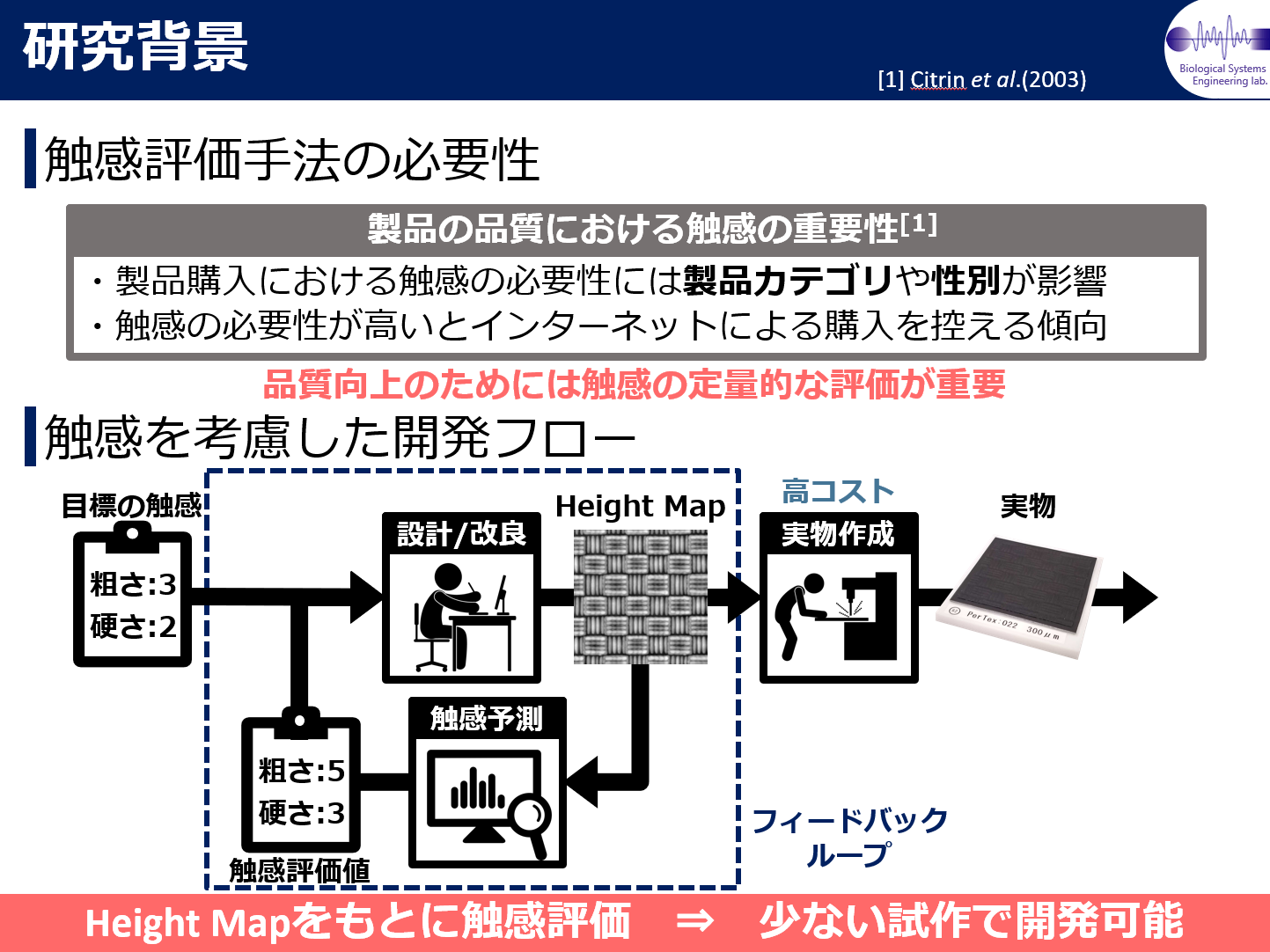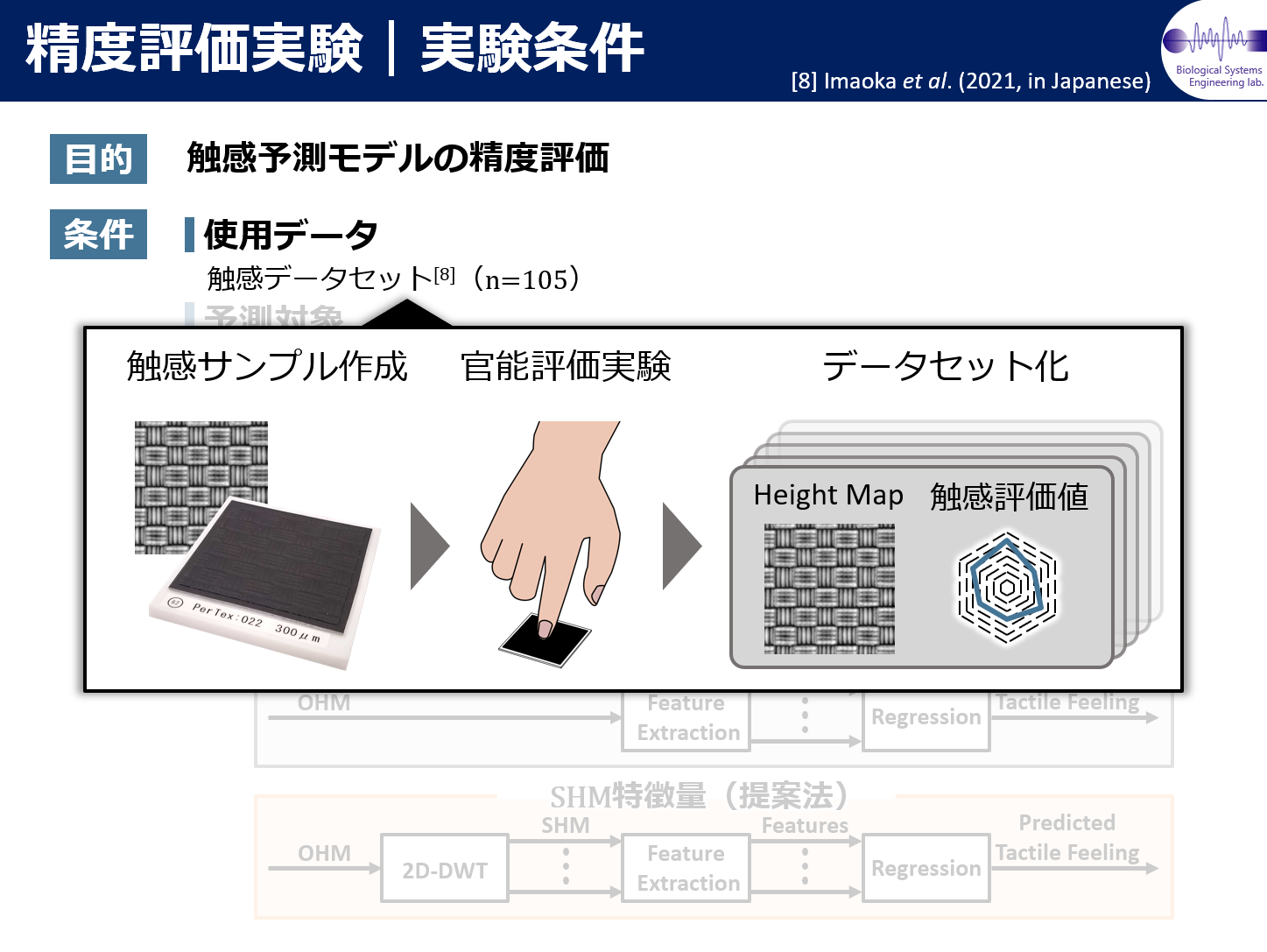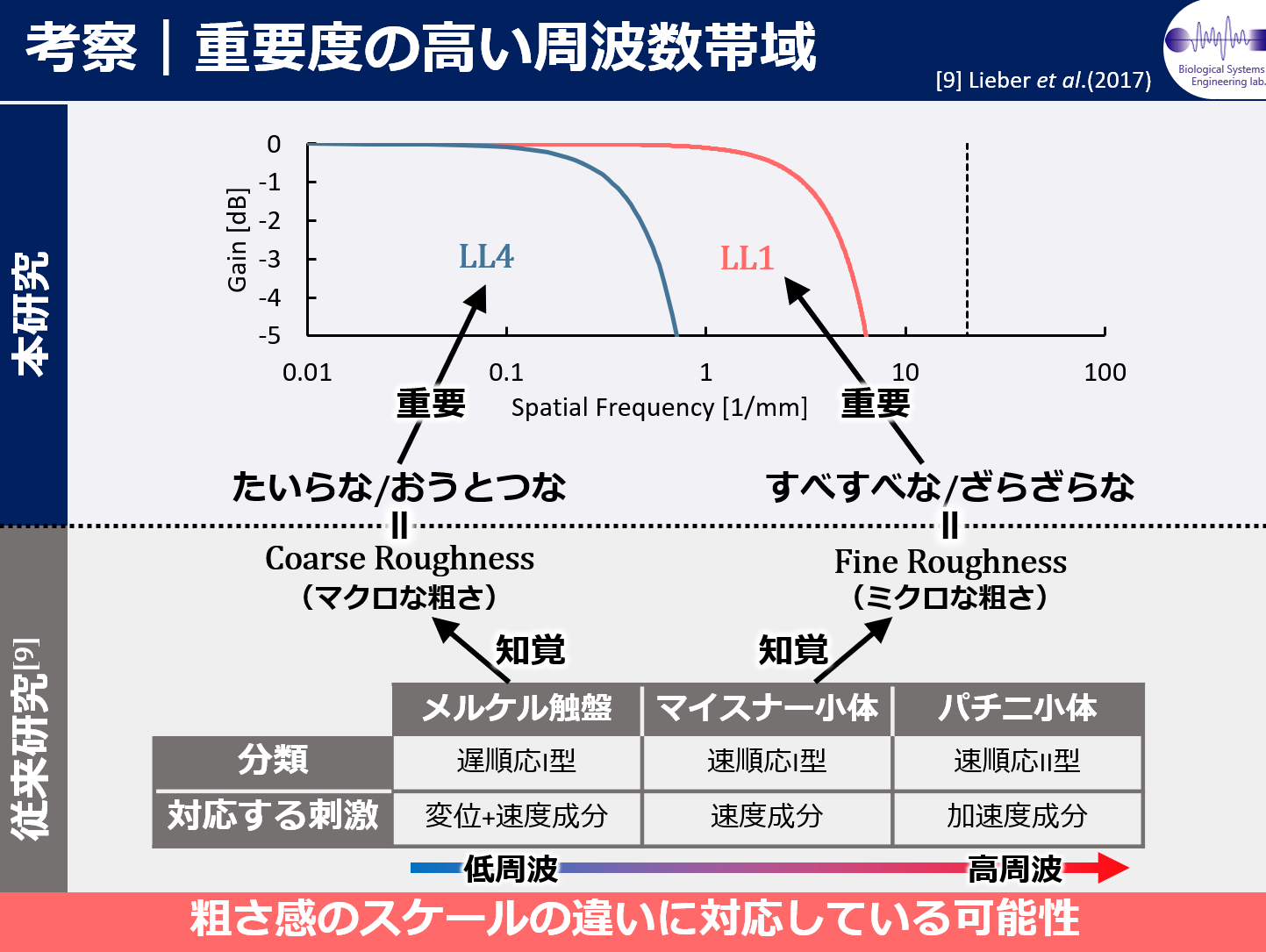Yuichi Kurita, Biological Systems Engineering Lab.
An Evaluation Method of Tactile Feeling by Using the Subband Height Map Based on Discrete Wavelet Transform
離散ウェーブレット変換に基づくSubband Height Map を用いた 触感推定
今岡恭司(2022年3月博士前期課程修了)
製品性能の成熟化が進む現在では,質感,審美性や快適性などの感性に深くかかわる感性品質への要求が高まっている.質感を構成する要素の一つである触感は製品評価に影響を与えるため,触感の適切なデザインが求められる.感性品質のデザインにおいて最も重要なことは,感性品質を評価するための定量的な基準である.定量的な評価基準を用いることで,設計者は明確な目標設定や製品評価が可能となる. 本稿ではHeight Map の特定帯域成分であるSHM の特徴量を用いた触感評価を提案した.まず,Height Map と5 つの触感評価値で構成される触感データセットを作成した.次に,触感データセットを用いて,OHM特徴量を用いた従来法とSHM 特徴量を用いた提案法の予測精度を計測した.その結果,粗さに関する触感の予測において,提案法の有効性を確認した.有効性が示された触感について,特徴量のVIPスコアを算出したところ特定の帯域成分が重要であることが分かった.これらの周波数帯域の違いは,各触感に対応する受容器の周波数特性の違いによるものであると結論付けられた.As product performance matures, the demand for Kansei quality, which is deeply related to sensitivity, increases. Tactile feeling, one of the components of Kansei quality, influences product evaluation. Therefore, the improvement of tactile feeling is important in product design. A quantitative criterion for evaluating Kansei quality is necessary for product designs based on Kansei. By using quantitative evaluation criteria, designers can set clear goals and evaluate products. In this study, we proposed a tactile prediction method using the SHM feature, which is a specific band component of the height map. First, we created a tactile feeling dataset comprising height maps and five tactile scores. Subsequently, we measured the prediction accuracy of the conventional method based on OHM features and the proposed method based on SHM features, using the tactile feeling dataset. We thus confirmed the effectiveness of the proposed method in predicting roughness-related tactile feelings. The VIP scores of the features indicated that specific band components were important for the tactile feelings that demonstrate the effectiveness of the proposed method. We concluded that the difference in the two important frequency bands was because of the difference in the frequency characteristics of the receptors corresponding to each tactile feeling.



